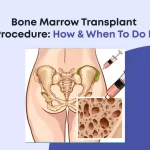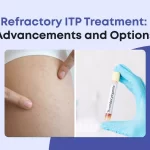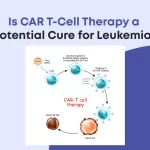
Is CAR T-Cell Therapy a Potential Cure for Leukemia?
If you’re dealing with leukemia and considering CAR T-cell therapy, this blog post is crafted just for you. Leukemia, a type of cancer affecting blood cells, has long been a challenging disease to treat. However, recent advancements in immunotherapy, particularly CAR T-cell therapy, have shown promising results in leukemia treatment. In this blog, we’ll delve into the science behind CAR T-cell therapy, its mechanism of action, clinical trials, and its effectiveness in treating leukemia. So, explore whether CAR T-cell therapy holds the key to curing leukemia.
Understanding Leukemia
Leukemia, a form of cancer, impacts both the blood and bone marrow. It further leads to an overproduction of abnormal white blood cells. These abnormal cells overcrowd healthy blood cells, compromising the body’s ability to combat infections and regulate bleeding. Leukemia can be acute or chronic. This depends on the speed of disease progression and the type of white blood cell affected.
Types of Leukemia
Leukemia is classified into several subtypes based on the type of white blood cell affected and the disease’s progression. The main types of leukemia include:
- Acute lymphoblastic leukemia (ALL)
- Acute myeloid leukemia (AML)
- Chronic lymphocytic leukemia (CLL)
- Chronic myeloid leukemia (CML)
Every subtype exhibits unique traits and requires specific treatment strategies.
Introduction to CAR T-Cell Therapy
Another name for CAR T-cell therapy is Chimeric Antigen Receptor T-cell therapy. This treatment is a form of immunotherapy that harnesses the power of the body’s immune system to fight cancer. It involves reprogramming a patient’s T cells to recognize and attack cancer cells. This groundbreaking approach has revolutionized cancer treatment by providing a highly targeted and personalized therapy option.
How does CAR T-Cell Therapy Work?
CAR T-cell therapy begins with the collection of a patient’s T cells through a process called leukapheresis. These T cells are subsequently altered in a laboratory setting to incorporate chimeric antigen receptors (CARs) on their surface. Furthermore, these CARs enable T cells to recognize specific proteins, or antigens, present in cancer cells. Once infused back into the patient’s body, the engineered CAR T cells target and destroy cancer cells, effectively eliminating the disease.
Clinical Trials and Research Findings
Numerous clinical trials have been conducted to evaluate the safety and efficacy of CAR T-cell therapy in leukemia treatment. Results from these trials have been promising, with many patients achieving complete remission and long-term survival. CAR T-cell therapy has shown remarkable success. The result has been particularly seen in treating B-cell acute lymphoblastic leukemia (B-ALL) and certain types of non-Hodgkin lymphoma.
Effectiveness and Potential as a Cure
CAR T-cell therapy has revolutionized leukemia treatment. This treatment offers hope to patients who have exhausted conventional treatment options. Although, it may not yet be considered a definitive cure for leukemia. Yet, it has demonstrated unprecedented effectiveness in inducing remission and prolonging survival in patients with refractory or relapsed disease. Ongoing research and clinical trials aim to optimize CAR T-cell therapy further. Researchers are also trying to expand its applicability across different subtypes of leukemia.
Challenges and Limitations
Despite its remarkable success, CAR T-cell therapy also poses challenges and limitations. One significant challenge is the high cost associated with this innovative treatment, limiting its accessibility to patients. Additionally, some patients may experience adverse side effects, such as cytokine release syndrome (CRS) or neurotoxicity. This adverse reaction requires careful management by healthcare providers.
Potential Side Effects of CAR T-Cell Therapy
Yes, CAR T-cell therapy has shown remarkable efficacy in treating leukemia. But, it also carries the risk of certain side effects that require careful management. Understanding these potential adverse reactions is essential for both patients and healthcare providers.
Cytokine Release Syndrome (CRS)
One prevalent side effect of CAR T-cell therapy is Cytokine Release Syndrome (CRS). This adverse reaction is a systemic inflammatory response triggered by the activation and proliferation of CAR T cells. CRS can manifest with symptoms ranging from mild flu-like symptoms to severe complications—for example, High Fever, Hypotension, and Organ Dysfunction.
Neurotoxicity
Another possible adverse effect of CAR T-cell therapy is Neurotoxicity. This one is also known as immune effector cell-associated neurotoxicity syndrome (ICANS). Neurotoxicity can present with a wide range of neurological symptoms, including confusion, delirium, seizures, and aphasia. Prompt recognition and management of neurotoxicity are critical to prevent severe complications.
Management Strategies
To mitigate the risk of Cytokine Release Syndrome and Neurotoxicity, doctors implement various management strategies, including:
Pre-treatment Evaluation
Conducting thorough assessments before CAR T-cell therapy to identify patients at higher risk of developing CRS or neurotoxicity.
Monitoring
Monitoring patients closely for signs and symptoms of CRS and neurotoxicity during and after CAR T-cell infusion.
Supportive Care
Providing supportive care measures like hydration, antipyretics, and vasopressors to manage CRS-related symptoms and maintain hemodynamic stability.
Anti-inflammatory Agents
Administering anti-inflammatory agents and corticosteroids to mitigate CRS and neurotoxicity.
Neurological Interventions
Implementing neurological interventions, like seizure management and supportive care for cognitive impairment, to address neurotoxicity-related symptoms.
By implementing these management strategies, doctors can effectively minimize the incidence and severity of side effects associated with CAR T-cell therapy, improving patient outcomes and quality of life.
Future Directions and Outlook
Looking ahead, the future of CAR T-cell therapy in leukemia treatment appears promising. Continued research efforts aim to address existing challenges and refine treatment protocols to enhance safety and efficacy. Moreover, the advancements in gene editing technologies, such as CRISPR-Cas9, are ongoing. This holds the potential to improve the precision and specificity of CAR T-cell therapy in the future. Moreover, it is paving the way for even greater success in the fight against leukemia.
Winding Up
CAR T-cell therapy represents a groundbreaking approach to leukemia treatment. It is offering renewed hope to patients facing this devastating disease. Nevertheless, it may not yet be considered a definitive cure. Yet, CAR T-cell therapy has demonstrated unprecedented effectiveness in inducing remission and improving outcomes for patients with refractory or relapsed leukemia. Research and advancements are being made with CAR T-cell therapy. And it holds the potential to revolutionize leukemia treatment and bring us closer to a future where leukemia is no longer a life-threatening condition.








